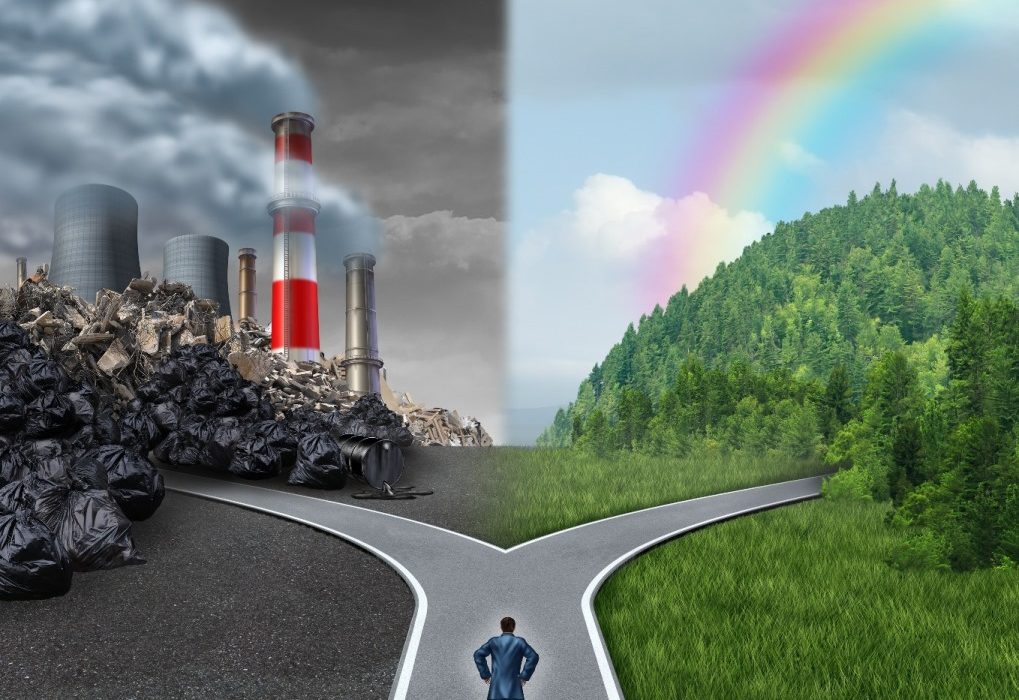As first documented in my 2002 book, The Restoration Economy, and as I (Storm Cunningham) show in this 2010 TEDx talk in Washington, DC) sustainable development is at least two centuries too late. To create a better present and future, we must undo existing damage to our world, not just slow the rate of new damage.
The most recent evidence of manufacturing’s shift from sustainability to regeneration appeared in a May 7, 2018 article by RP Siegel in Strategy + Business magazine. It documents how industrial firms are increasingly striving to redice carbon in the atmosphere, rather than “merely” attempting to reduce the amount of carbon they add to it. It’s the difference between slowing the rate of climate change, and actually reversing it. Climate restoration, in other words.
The article starts with an example from Interface, Inc. The late, great founder of Interface, Ray Anderson, was a longtime acquaintance of mine. He brought me down to Atlanta to bring him up to speed on restorative trends shortly before his death, so I like to think that some small part of Interface’s shift from carbon neutral to carbon negative might be traced back to our conversations over almost two decades.
Here are a few excerpts from the Strategy + Business article:
In 1996, the carpet tiles produced by Interface Inc. — the world’s largest modular carpet manufacturer — had an estimated carbon footprint of 37 pounds of CO2 per square yard. That’s equivalent to the amount of carbon dioxide released by burning a little less than two gallons of gasoline.
Today, Interface has developed a carpet tile prototype, called Proof Positive, that can be produced while removing 3.7 pounds of CO2 from the atmosphere with each square yard produced. And because Interface utilizes a closed-loop recycling program, through which it works with regional recyclers to collect old carpets and reprocess them into new ones, the carbon it removes could remain out of the atmosphere for generations.
The evolution of Interface’s carpet manufacturing process is part of the next phase of sustainable business practices. For centuries, many of the products intended for human consumption relied on the extraction of raw materials from the Earth and, in the process, the release of carbon dioxide into the atmosphere. The resulting environmental degradation led some companies in the late 1990s and early 2000s to respond with pledges to go “carbon neutral” — to avoid a net release of carbon by reducing emissions and then buying carbon credits or planting trees.
Today, given the heightened urgency of climate change, there’s an even more dramatic development: Companies are going “carbon negative” by finding ways to actively pull carbon dioxide from the air and lock it into their products.
Interface has a long legacy as a leader in the sustainability movement. In 1994, founder Ray Anderson declared his “Mission Zero” goal, to eliminate the company’s negative impact on the environment. The company has since reduced its carbon emissions by 98 percent and its water use by 93 percent, and it recycles 100 percent of its materials.
The company’s current sustainability mission is to take its efforts to the next level. Says Erin Meezan, Interface’s chief sustainability officer, “How do you shift from the mentality of having less impact, doing less harm…to being a company that actually has a positive impact? We’re talking about explicit goals that go beyond carbon reduction [to] really focus on solving the climate crisis.”

